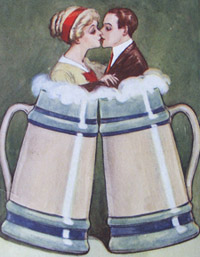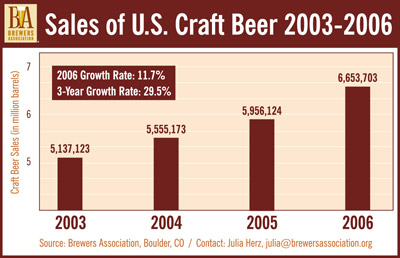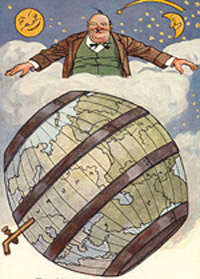 If starts with Lew Bryson’s post What We “Owe” the Industry (even if you don’t wade through he comments which weave here and there) then what follows might make more sense. Alan McLeod brought something else to the conversation when he asked Do We Love The Beer Or Brewer?
If starts with Lew Bryson’s post What We “Owe” the Industry (even if you don’t wade through he comments which weave here and there) then what follows might make more sense. Alan McLeod brought something else to the conversation when he asked Do We Love The Beer Or Brewer?
For me these questions are related because b) I don’t love the beer or the brewer; as a consumer I appreciate the experience and as a journalist I live for the story. And a) the first city editor I worked for, Bill Schmelzle, taught me that nothing else in a story mattered if I didn’t get the facts right (and when I proved I could do that then he introduced the importance of balanced reporting).
Principals in a story could expect this, not because I “owed” it to them but because I worked for the people who bought the paper every day. Is this an old-fashioned notion, irrelevant in these days (of blogs, Fox television, “we media” and specialty magazines)? It doesn’t matter. It’s part of my DNA.
Newspapers should be advocates for the communities which they serve, whether they put the word “advocate” in their masthead or not. Granted, specialty magazines are a step or three away from newspapers. But at my local Borders I only have to walk three feet from DRAFT and All About Beer magazines (Beer Advocate is not on newstands) to pick up the New Yorker or Harpers. That’s pretty close and heady company.
Let’s say the community where I live stinks at the village center because we need some central sewage system instead of a hodge-podge of septic tanks. The local paper isn’t doing a very good job if it writes only about how pretty the new gardens are downtown – while the smell of sewage overwhelms the petunias.
Thus it drives me crazy that Ashton Lewis wrote, “But the way I see it is that a beer magazine boasting to be the ‘Beer Advocate’ should focus on the positive.”
Mr. Bryson puts it more eloquently:
But “advocate” does not mean “worship blindly,” or “defend without judgment.” They stand outside the industry, and they judge it by their own standards. And by those standards, whether you agree with them or not, they believe that they advocate “beer” — not “the craft beer industry”, not “your beer” — by speaking plainly about beers they think fall short, breweries they think engage in bad practices, retailers and wholesalers who don’t measure up to their standards.
That’s actually more likely to take place at BeerAdvocate.com, in a “we media” sort of way. I want to see more of that in the magazine, more in the other beer magazines and more in the non-beer press.
Of course, most of what appears in the media gets written or spoken in the vast territory between reporting bare facts and offering criticism. There must be a balance. While I already answered the question the headline of Alan’s post (“Do we love the beer or the brewer?”) what he’s really writing about is finding that balance for yourself.
Do you want somebody to tell you what beers you should like? Or where you should enjoy them? Is there some other reason you read about beer or talk about it over, of course, beer? He’s asking good questions.
Answer them and you’ll better understand what you want an “advocate” to do for you.

 There has been a fair amount of hand-wringing as the partnership of Fordham Brewing and Anheuser-Busch prepares to
There has been a fair amount of hand-wringing as the partnership of Fordham Brewing and Anheuser-Busch prepares to